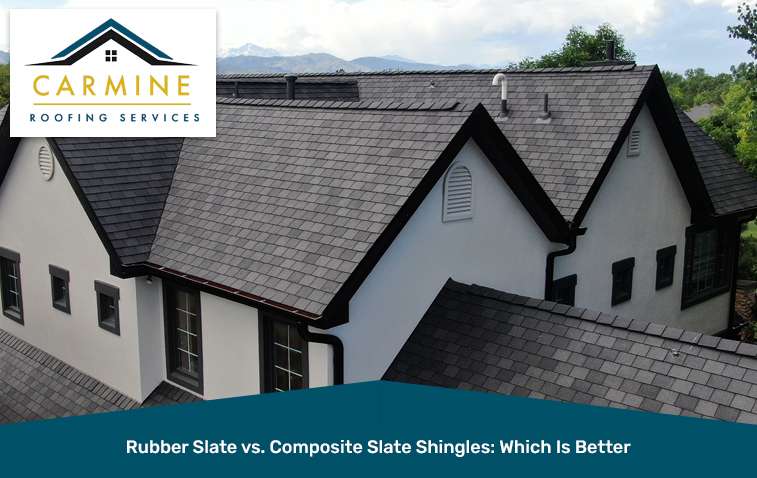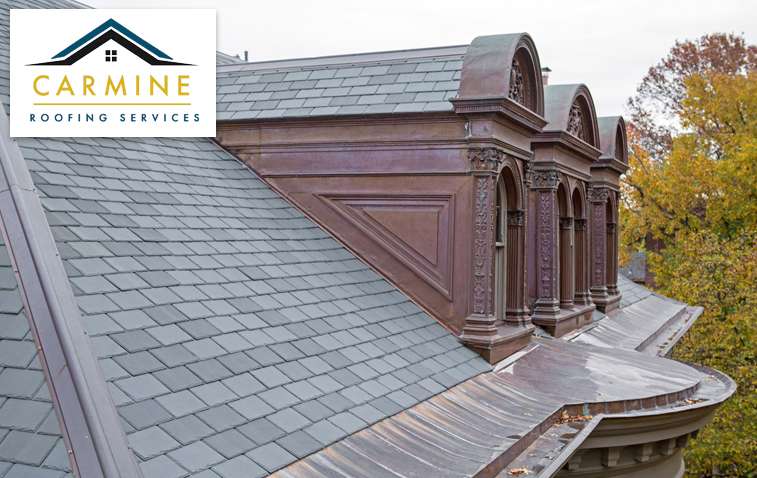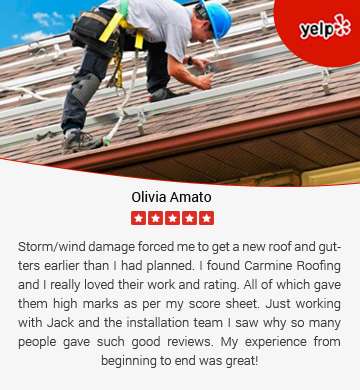Rubber Slate vs. Composite Slate Shingles: Which Is Better
Choosing a new roof can be tricky. There are many different types of roofing materials. Two popular choices are rubber slate and composite slate shingles. Both look like real slate. However, they have different properties. Therefore, understanding the differences between rubber and composite slate shingles is very helpful. This knowledge allows homeowners to make smart choices.

What are Rubber Slate Shingles?
Rubber slate shingles use recycled materials. They often contain recycled tires and plastics. This makes them an eco-friendly option. This also means they are flexible. Because they are flexible, they resist cracking. Additionally, rubber slate shingles are lightweight. This makes them easier to install than heavier materials. Also, rubber slate shingles come in different colors and styles. So, you can find a style that matches your home.
Rubber slate shingles are very durable. They can withstand strong winds. They also resist damage from hail. Plus, rubber slate shingles are resistant to mold and algae growth. This is important in damp climates. Moreover, they don’t absorb much water. This protects your roof from water damage. Thus, rubber slate shingles are a good choice for many homeowners.
Furthermore, rubber slate shingles are easy to walk on. This is helpful for maintenance. For instance, if you need to clean your gutters, you can walk on the roof without worrying about damaging the shingles. In addition, they are quiet during rainstorms. This is because they absorb sound better than some other roofing materials.
What are Composite Slate Shingles?
Composite slate shingles are made from a mix of materials. These materials often include recycled plastics and fiberglass. Sometimes, they also contain crushed stone. This mixture gives them a realistic slate look. Plus, they are designed to mimic the texture of natural slate.
Composite slate shingles are strong and durable. They resist damage from impacts. For example, they can handle hail and falling branches. They also stand up well to extreme temperatures. Therefore, they are a good choice for areas with hot summers and cold winters. Besides, they are less likely to crack than real slate.
Additionally, composite slate shingles are fire-resistant. This is a very important safety feature. They also resist fading from the sun’s UV rays. Therefore, they will maintain their color for many years. Similarly, they require little maintenance. This saves homeowners time and effort.
How Long Do They Last?
Rubber slate shingles can last for a long time. They often come with warranties of 50 years or more. This shows how durable they are. Likewise, composite slate shingles also have a long lifespan. They can also last for 50 years or more with proper care.
Both rubber and composite slate shingles are designed for longevity. This means you won’t have to replace your roof very often. This can save you money in the long run. Moreover, the long lifespan makes them a good investment for your home.
How Do They Handle Different Weather?
Rubber slate shingles perform well in different weather conditions. Their flexibility helps them withstand strong winds. Furthermore, they are impact-resistant. This protects them from hail damage. Also, they don’t absorb much water. This prevents water damage in rainy climates.
Composite slate shingles are also very weather-resistant. They can handle extreme temperatures. This is important in areas with hot summers and cold winters. They also resist damage from snow and ice. Additionally, they are less likely to crack in freezing temperatures.
| Feature | Rubber Slate Shingles | Composite Slate Shingles |
| Material | Recycled materials | Recycled plastics, fiberglass, crushed stone |
| Durability | High | High |
| Weather Resistance | Excellent | Excellent |
| Lifespan | 50+ years | 50+ years |
| Maintenance | Low | Low |
Installation of Rubber Slate vs. Composite Slate
Rubber slate shingles are lightweight. This makes them easier to install. Thus, installation can be faster. This can save on labor costs. Similarly, composite slate shingles are also lighter than natural slate. This makes them easier to handle than real slate.
Both types of shingles require proper installation. This ensures they perform well and last a long time. Therefore, it is important to hire a qualified installer. This will ensure the job is done correctly. Moreover, proper installation prevents leaks and other problems.

Which is Better?
Both rubber and composite slate shingles are excellent roofing choices. They both offer durability and weather resistance. Furthermore, they both have long lifespans. However, there are some small differences. Rubber slate is more flexible. Composite slate offers a more realistic slate look.
The best choice depends on your specific needs and preferences. If you want an eco-friendly option, rubber slate is a good choice. If you want the most realistic slate appearance, composite slate is a better option. In the end, both materials will provide a beautiful and long-lasting roof.



